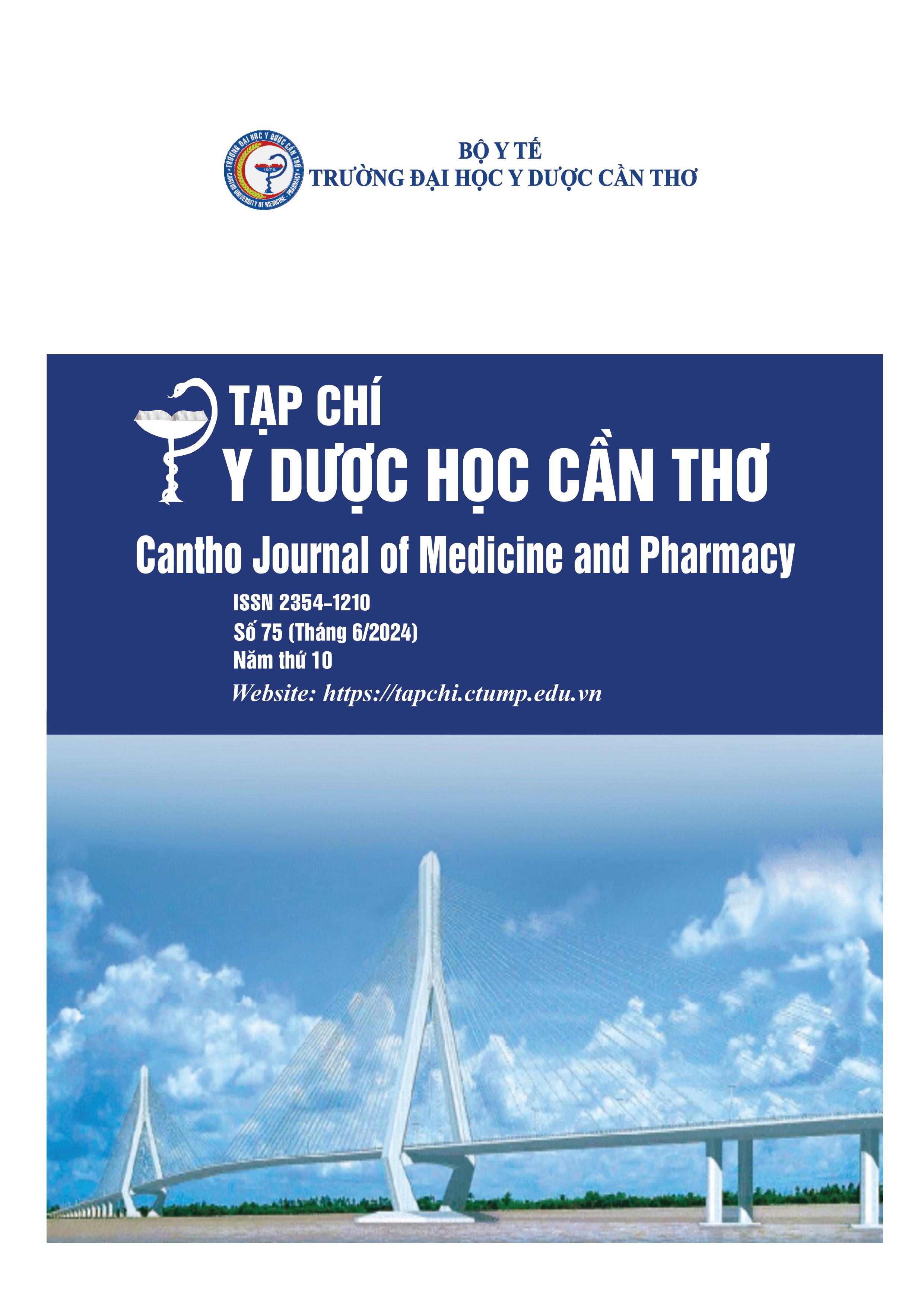STUDY ON THE PREVALENCE AND SOME RISK FACTORS OF OSTEOPOROSIS IN OVERWEIGHT AND OBESE WOMEN OVER 50 YEARS OLD AT CAN THO CENTRAL GENERAL HOSPITAL AND CAN THO UNIVERSITY OF MEDICINE AND PHARMACY HOSPITAL FROM 2022 TO 2024
Main Article Content
Abstract
Background: Obesity and osteoporosis are two diseases whose pathogenesis originates from multipotent mesenchymal stem cells. The aim of study was estimated factors associated with osteoporosis in overweight and obesity women over 50 years old, screen out high-risk cases for early diagnosis and treatment which minimize sequelae caused by osteoporosis. Objectives: To determine bone mineral density (BMD), the prevalence of osteoporosis and indentified risk factors for osteoporosis in overweight and obese womens over 50 years old Materials and methods: A cross-sectional study was conducted on 129 overweight and obesity womens over 50 years old at Can Tho Central General Hospital and Can Tho University of Medicine and Pharmacy Hospital from 2/2023 to 04/2024. Each patient has to fill out a prepared questionnaire, bone densitometry at two of their lumbar vertebrae and the neck of their femur by DEXA for bone density assessment Results: 51.1% had overweight and 48.9% had osteopenia. The prevalence of osteoporosis in the femoral neck was 27.9% and in lumbar spine was 40.3%. BMD of obesity womens was higher than overweight (p<0.05). BMD of the over 60 years old group was lower than the 51 to 60 years old group (p<0.01). Osteoporosis in the lumbar spine showed an association with age (p<0.05), overweight (p<0.05), physical activity (p<0.05), time of menopause (p<0.05) and number of children (p<0.05). Osteoporosis in the femoral neck showed an assocation with age (p<0.05). Conclusions: The overweight group had a lower average bone density than the obese group at two locations: the femoral neck and the lumbar spine., but it had a higher rate of osteoporosis in the lumbar spine than the obese group.
Article Details
Keywords
osteoporosis, bone mineral density(BMD), overweight, obesity
References
2. World Health Organization. Obesity and Overweight. 2017. http://www.who.int/en/newsroom/fact-sheets/detail/obesity-andoverweight.
3. Jay J. Cao. Effects of obesity on bone metabolism. Journal of orthopaedic surgery and research. 2011. 6, 30, DOI: 10.1186/1749-799X-6-30.
4. Lưu Ngọc Giang. Nghiên cứu mật độ xương, kháng insulin và các yếu tố nguy cơ loãng xương ở phụ nữ trên 45 tuổi thừa cân, béo phì. Trường Đại học Y Dược - Đại học Huế. 2019. 124.
5. Trần Bùi Hoài Vọng, Trần Thừa Nguyên và cộng sự. Khảo sát tỷ lệ loãng xương của phụ nữ tại bệnh viện trung ương Huế. Tạp chí Nội tiết và Đái tháo đường. 2022. 51, 81-85, DOI: 10.47122/vjde.2022.51.11.
6. Lại Thùy Dương, Nguyễn Thị Thanh Mai. Nghiên cứu thực trạng loãng xương ở phụ nữ sau mãn kinh đến khám tại khoa khám bệnh theo yêu cầu bệnh viện Bạch Mai. Tạp Chí Y học Việt Nam. 2023. 530(1), 199-204, https://doi.org/10.51298/vmj.v530i1.6603.
7. Phạm Kim Xoàn. Nghiên cứu tình hình, các yếu tố liên quan và đánh giá kết quả điều trị loãng xương bằng Alendronate phối hợp với canxi và vitamin D3 ở phụ nữ 40 tuổi điều trị tại bệnh viện đa khoa khu vực tỉnh An Giang năm 2016-2017. Trường Đại học Y Dược Cần Thơ. 2017. Luận văn bác sĩ chuyên khoa II, Trường Đại học Y dược Cần Thơ.
8. Đào Quốc Việt, Nguyễn Tiến Bình, và Nguyễn Thị Phi Nga. Nghiên cứu mối liên quan giữa mật độ xương, tỷ lệ loãng xương với một số đặc điểm ở đối tượng thừa cân, béo phì. Journal of 108 - Clinical Medicine and Phamarcy. 2019. 14(5), 50-57.
9. Lê Minh Thùy, Tăng Kim Hồng, và Lê Minh Trung. Mối liên quan giữa hội chứng chuyển hóa và loãng xương ở phụ nữ trên 50 tuổi. Tạp Chí Nghiên cứu Y học. 2021. 143(7), 108-114, https://doi.org/10.52852/tcncyh.v143i7.655.
10. Bijelic R., Milicevic S., and Balaban J. Risk Factors for Osteoporosis in Postmenopausal Women. Med Arch. 2017. 71(1), 25-28, DOI: 10.5455/medarh.2017.71.25-28.


